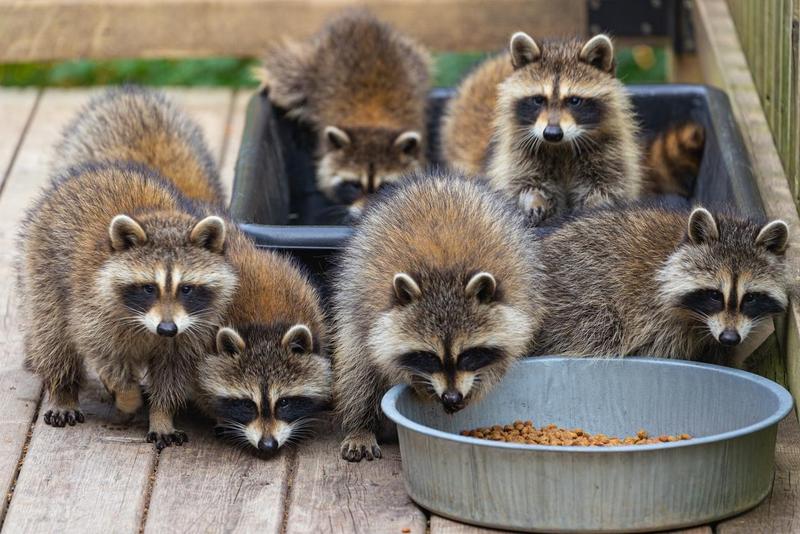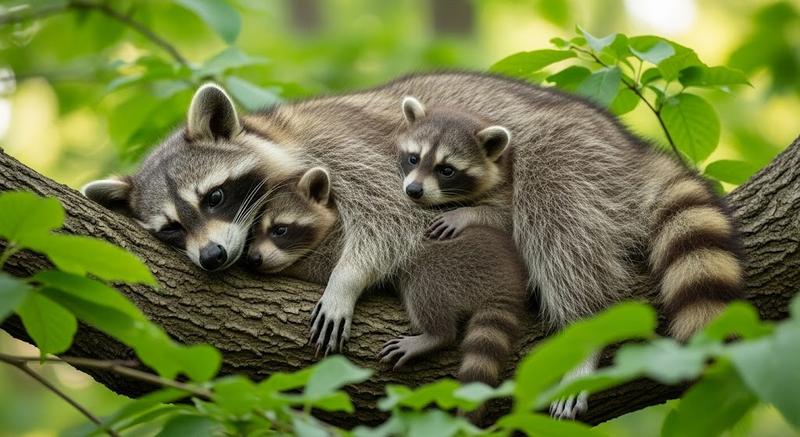What’s a Group of Raccoons Called? Fun Facts & Rare Terms

A group of raccoons is called a gaze. It’s a fitting term for these observant, curious creatures that often seem to be watching us just as closely as we’re watching them. While raccoons are usually solitary, there are times when they form temporary groups—and that’s where these unique collective nouns come into play.
In this article, we’ll explore where the term gaze comes from, what it reveals about raccoon behavior, and how it fits into a long-standing tradition of imaginative group names for animals.
Why "gaze" is the perfect word for raccoons
The collective noun gaze may sound poetic, but it captures something real about raccoons. These animals are famously alert and curious. They frequently stand on their hind legs, scanning the environment with their distinctive masked faces and gleaming eyes. Their deliberate, watchful nature makes gaze feel like more than just a clever label—it reflects their personality.
The word itself traces back to Middle English and Old Norse origins, both rooted in the act of looking intently. In raccoons, this behavior is not just instinct—it’s strategy. Whether foraging for food, sensing predators, or investigating human environments, raccoons rely on their sharp observation skills.
In addition to gaze, you might hear:
-
Nursery – used when referring to a mother raccoon with her young kits
-
Mask – an informal, poetic term inspired by their black facial markings
These terms may not appear in scientific journals, but they’re embraced in wildlife writing, trivia games, and popular nature blogs—adding color and personality to our understanding of animal behavior.
“I looked out and saw five of them just sitting in the moonlight, all standing up and staring straight at me. It really did feel like a gaze.” — Backyard wildlife enthusiast, Oregon
A medieval tradition: Where animal group names come from
Collective nouns like gaze don’t come from modern science—they trace back to medieval England. In 1486, a book called The Book of Saint Albans compiled a long list of terms for animal groups. These weren’t just for hunters; they were a way to show wit, literacy, and class.
Here are a few that still endure:
-
A murder of crows
-
A parliament of owls
-
A prickle of porcupines
-
A business of ferrets
These terms were often exaggerated or whimsical, meant more to entertain than to serve scientific accuracy. Over time, many made their way into popular usage, especially in trivia books and natural history writing. A gaze of raccoons likely emerged through this tradition—its poetic ring and behavioral truth helped it stick.
Are raccoons social animals?

Though commonly thought of as solitary, raccoons are more flexible than they appear. Their social behavior changes based on age, season, and habitat. Here’s when you might actually encounter a “gaze” in the wild.
Nurseries: Mothers and kits
After giving birth, female raccoons (called sows) raise litters of two to five kits. These family units stick together for several months as the kits learn to forage, climb, and survive. During this time, the group functions like a true nursery—traveling and denning together.
Winter den-sharing
In cold climates, raccoons sometimes share dens to conserve warmth and energy. These dens may house multiple adults, even if they’re not related. Wildlife researchers in northern states have documented dens with up to 20 raccoons bundled together during deep freezes. It’s a rare but practical example of cooperation in an otherwise independent species.
Sibling coalitions
Young male raccoons may travel in pairs or small groups for a short time after leaving the den. These temporary coalitions help them explore new territory before fully going solo. Female raccoons, by contrast, tend to establish ranges near their birthplace and remain alone.
Nocturnal patterns and food sharing
Raccoons are strictly nocturnal. They emerge at dusk and are active throughout the night, foraging for fruits, insects, amphibians, and even human leftovers. Occasionally, when food is abundant—like during berry season or near urban trash sources—raccoons may tolerate one another in overlapping foraging grounds. While not forming tight social bonds, this behavior shows a willingness to share space under the right conditions.
Intelligence and adaptability
Raccoons are among the most intelligent mammals in North America. They’re capable of solving puzzles, remembering solutions, and even opening latches or jars. Their cognitive abilities may explain why they can navigate both solitary and occasional group living based on environmental needs. In fact, some researchers rank their intelligence just below monkeys and great apes in terms of problem-solving.
According to A-Z Animals, raccoons have been observed using “communal latrines” and recognizing individual animals—both signs of social awareness, even in a mostly solitary species.
Other fun animal group names
Raccoons aren’t the only species with colorful collective nouns. Here are some of the most memorable:
|
Animal |
Group Name |
|
Giraffes |
A gaze |
|
Crows |
A murder |
|
Owls |
A parliament |
|
Ferrets |
A business |
|
Porcupines |
A prickle |
|
Ravens |
An unkindness |
These names may not show up in scientific journals, but they’ve become part of our cultural lexicon—adding humor and personality to the way we talk about animals.
“One evening, I looked out and saw five raccoons standing in the yard, all staring toward the porch light like a scene from a heist movie. It felt less like a group and more like a committee.” — Greg H., North Carolina
Frequently asked questions
What are baby raccoons called?
They’re called kits, or occasionally cubs.
Are raccoons truly solitary?
Mostly. But mothers raise kits in family groups, and raccoons may den together in winter. Young males may also travel in short-lived sibling groups before dispersing.
Why is it called a gaze?
The term likely emerged through historical lists of collective nouns. It fits raccoons’ watchful behavior—standing upright and observing their surroundings intently.
Is "mask" a real term?
"Mask" is not official, but it’s used informally and poetically to refer to raccoons in groups, referencing their distinctive facial markings.
Do raccoons recognize each other?
Studies suggest they can recognize familiar individuals and may remember them over time—a sign of their high intelligence and social awareness.
Final thoughts
So yes—a group of raccoons is called a gaze. While you may not see the term in a science textbook, it perfectly captures the watchful, clever, and mysterious nature of these animals. Whether they’re peeking over a fence or raising young in a hollow tree, their social lives are far more complex than they first appear.
Explore More Raccoon Facts
This unique social structure is just the beginning of what makes raccoons so fascinating. For instance, many people are surprised to learn that they are not rodents at all, and are actually more closely related to bears than you might think. There are dozens of other fun facts about raccoons that reveal just how special these creatures are.
Show Your Raccoon Love
Now that you know the perfect term for a group of these masked bandits, why not celebrate their unique charm? Show off your expert knowledge with our collection of funny animal shirts or fully embrace their style with our Raccoon Aesthetic Outfit ideas.
Recent Posts
- How Long Can Raccoons Survive Without Food or Water?
- How Long Do Raccoons Live? Wild vs Captive Lifespans Explained
- Are Raccoons Marsupials? Here's the Truth Behind the Confusion
- Are Raccoons Related to Bears? The Evolutionary Truth Explained
- Is a Raccoon a Rodent? The Truth About Their Classification
- 15 Animals That Look Like Raccoons and What Makes Them So Similar
- What Are Raccoons Good For? 4 Surprising Benefits You Should Know
- 20 Fun Facts About Raccoons That'll Surprise You
- Return Policy for Clothing Online: What You Need to Know
- How to Check the Quality of a T-Shirt Before Buying (2025 Guide)

